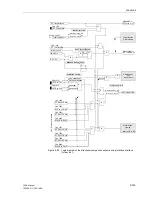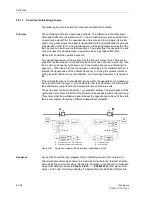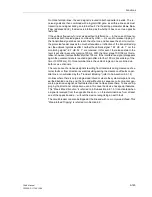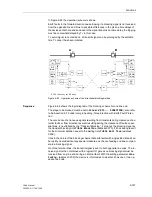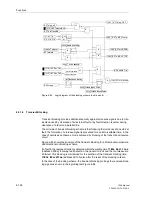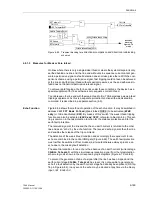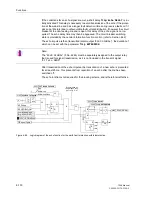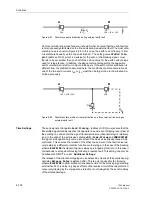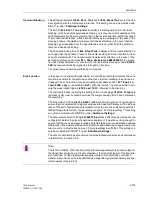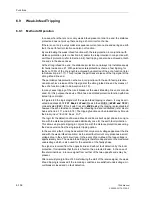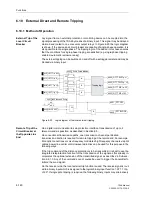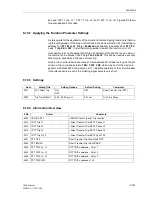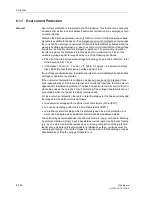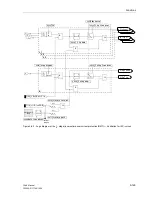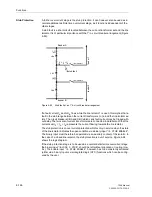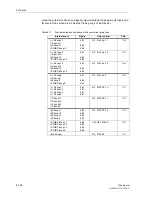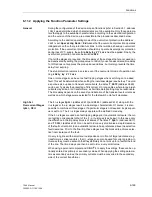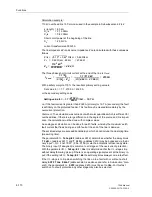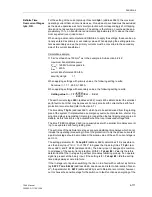
Functions
6-156
7SA6 Manual
C53000-G1176-C156-2
6.9
Weak-Infeed Tripping
6.9.1
Method of Operation
In cases, where there is no or only weak infeed present at one line end, the distance
protection does not pick up there during a short-circuit on the line.
If there is no or only a very small zero sequence current at one line end during an earth
fault, the earth fault protection can also not function.
By coordinating the weak infeed function with the teleprotection in conjunction with
distance protection (refer to Section 6.6) and/or the teleprotection in conjunction with
earth fault protection (refer to Section 6.8), fast tripping can also be achieved at both
line ends in the above cases.
At the strong infeed line end, the distance protection can always trip instantaneously
for faults inside zone Z1. With permissive teleprotection schemes, fast tripping for
faults on 100 % of the line length is achieved by activation of the echo function (refer
to Sub-section 6.6.1.11). This provides the permissive release of the trip signal at the
strong infeed line end.
The permissive teleprotection scheme in conjunction with the earth fault protection
can also achieve release of the trip signal at the strong infeed line end by means of
the echo function (refer to Sub-section 6.8.1.5).
In many cases tripping of the circuit breaker at the weak infeeding line end is also de-
sired. For this purpose the device 7SA6 has a dedicated protection function with ded-
icated trip command.
In Figure 6-89 the logic diagram of the weak-infeed tripping is shown. It may be acti-
vated in address
2501
FCT Weak Infeed
(Weak Infeed MODE) (
ECHO and TRIP
)
or deactivated (
OFF
). If this “switch” is set to
ECHO only
, the tripping is also disabled;
however the echo function to release the infeeding line end is activated (refer also to
Sub-section 6.6.1.11 and 6.8.1.5). The tripping function can be blocked at any time via
the binary input “
>BLOCK Weak Inf
”.
The logic for the detection of a weak-infeed condition is built up per phase in conjunc-
tion with the distance protection and additionally once for the earth fault protection.
This allows single-pole tripping in conjunction with the distance protection assuming
the device version has the single-pole tripping option.
In the event of a fault, it may be assumed that only a small voltage appears at the line
end with the weak-infeed condition, as the small fault current only produces a small
voltage drop in the short-circuit loop. In the event of zero-infeed, the loop voltage is
approximately zero. The weak-infeed tripping is therefore dependent on the measured
undervoltage which is also used for the selection of the faulty phase.
If a signal is received from the opposite line end without fault detection by the local
protection, this indicates that there is a fault on the protected feeder. In the case of
three terminal lines, a receive signal from neither of the two opposite ends may be
present.
After a security margin time of 40 ms following the start of the receive signal, the weak-
infeed tripping is released if the remaining conditions are satisfied: undervoltage, cir-
cuit breaker closed and no fault detection.
Summary of Contents for siprotec 7SA6
Page 2: ...Siemens Aktiengesellschaft Book No C53000 G1176 C156 2 ...
Page 18: ...xviii 7SA6 Manual C53000 G1176 C156 2 ...
Page 32: ...Introduction 1 14 7SA6 Manual C53000 G1176 C156 2 ...
Page 82: ...Hardware and Connections 2 50 7SA6 Manual C53000 G1176 C156 2 ...
Page 119: ...SIPROTEC 4 Devices 4 25 7SA6 Manual C53000 G1176 C156 2 Figure 4 20 CFC Logic example ...
Page 190: ...Configuration 5 62 7SA6 Manual C53000 G1176 C156 2 ...
Page 652: ...Installation and Commissioning 8 78 7SA6 Manual C53000 G1176 C156 2 ...
Page 724: ...Technical Data 10 56 7SA6 Manual C53000 G1176 C156 ...
Page 800: ...Appendix A 76 7SA6 Manual C53000 G1176 C156 2 ...
Page 866: ...Appendix B 66 7SA6 Manual C53000 G1176 C156 2 ...


